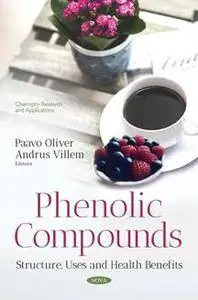Phenolic Compounds: Structure, Uses and Health Benefits
by Paavo Oliver and Andrus Villem
English | 2017 | ISBN: 1536128813 | 170 Pages | PDF | 4.31 MB
by Paavo Oliver and Andrus Villem
English | 2017 | ISBN: 1536128813 | 170 Pages | PDF | 4.31 MB
Phenolic Compounds: Structure, Uses and Health Benefits opens with a discussion on phenolic substances such as gallic acid, catechin, chlorogenic acid, caffeic acid, p-coumaric acid, ferulic acid, and quercetin. The most common analytical methods (based on spectrophotometric, chromatographic or electrochemical techniques) for determining phenolic compounds applied to a wide range of sample sources are presented. Additionally, the authors study the high concentrations of bioactive substances in fruit berries in order to determine the link between daily fruit intake and human health. A review of the modern literature on extraction, filtration, and adsorption that may be combined with advanced oxidation treatments to minimalize the environmental impact of the remaining wastes is presented, especially focusing on phenolic compounds recovery from olive mill liquidwastes. Lastly, the authors provide an overview on the antiradical and antioxidizing properties of calix[n]arenes and calix[n]resorcinols as part of a larger discussion on the impact of “preorganization” of antioxidant fragments attached to calix[n]arene and calix[n]resorcinol scaffolds and their intramolecular synergy on antioxidant activity.



